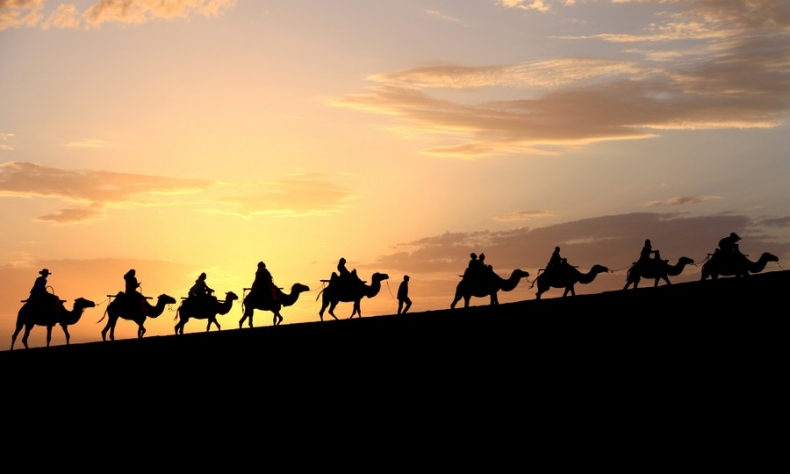Pluralistic Unity: Resonance of Culture, Ethnicity and History

The multiethnic unification tradition forms the golden thread running through China’s millennia of history.
For thousands of years, multiethnic unity has been a regular feature of China’s historical development—from the ancient concept of tianxia (“the world”) emerging as early as the pre-Qin era to the modern unified multiethnic country. (Pre-Qin era usually refers to the period of history prior to the founding of the Qin Dynasty, China’s first unified imperial dynasty, in 221 B.C.—Ed.) This enduring tradition has shaped China’s political landscape and cultural identity.
Unlike many Western nations, where the collapse of empires often led to prolonged fragmentation, China has consistently moved from division to reunification, reinforced by strong cohesion. This cycle reflects a deep-rooted political pursuit of unity, ethnic integration and cultural inclusiveness—key elements that define Chinese civilization.
The pursuit of political unity
The national research project on tracing the origins of Chinese civilization reveals that over 5,000 years ago, interconnected cultures flourished along the Yellow, Yangtze and Liaohe rivers. While regional cultures developed independently, they also exchanged ideas, gradually converging toward an integrated pattern centered in the Central Plains—a phenomenon known as “Chinese civilization with unity in diversity.”
In Western history, the collapse of vast empires has often signaled the persistence of disunity; for instance, Alexander the Great’s Macedonian Empire swiftly fractured after his death, and neither the Roman nor the Persian empires ever reclaimed a transcontinental unity.
China, however, always returned to unification. From the centralized rule of the Xia, Shang and Zhou dynasties (c. 2070-256 B.C.) to the ensuing fragmentation of the Zhou leading to the Spring and Autumn and Warring States period (770-221 B.C.) and Emperor Qin Shi Huang’s unification of China in 221 B.C., Chinese history has followed a recurring cycle: division followed by reunification. Despite periods of fragmentation, the dominant trend has always been the reestablishment of a unified state.
The ancient tianxia worldview envisioned a world divided into five regions: the Central Plains (home to the Huaxia people) surrounded by ethnic groups such as the Yi in the east, Man in the south, Rong in the west, and Di in the north. This pre-Qin concept of Huaxia evolved into the Han identity during the Han Dynasty (206 B.C.-A.D. 220), while ethnic minorities primarily inhabited the surrounding regions. Together, they formed a unified world under Chinese civilization.
China entered an era of multiethnic unity from the Qin and Han dynasties onward, reinforced by the Sui and Tang dynasties (581-907) and continued under the Yuan, Ming and Qing (1279-1911).

In practice
Tianxia was not just the domain of the Huaxia people but a shared world of diverse ethnic groups. Small, local kingdoms or separatist regimes rose and fell—both in the Central Plains and in regions like Xinjiang—yet they were always reintegrated.
In the 10th century, the Dunhuang Mogao Caves depicted a portrait of Li Shengtian—ruler of the Kingdom of Khotan (232 B.C.-A.D. 1006) in today’s Xinjiang—wearing Tang-style robes. Khotan rulers adopted the Tang royal surname “Li” to legitimize their rule. This cultural symbiosis flourished in Khotan and stands as a historical testament to China’s enduring pluralistic unity.
From the Han to the middle and late Qing, the vast areas both north and south of the Tianshan Mountain Range in Xinjiang were called the Western Regions. During the Han, the establishment of the Western Regions Frontier Command, which exercised military and political administration over the Western Regions, saw those areas formally included in Chinese territory. They became a province and were renamed as “Xinjiang,” meaning “land newly returned,” during the Qing.
Cultural inclusiveness
Xinjiang, a crossroads of Eastern and Western civilizations, played a pivotal role in shaping a pluralistic yet unified culture.
During the late Shang Dynasty (1600-1046 B.C.), jade from Xinjiang was introduced to the Central Plains. Correspondingly, exports from the Central Plains, such as painted pottery and silk, spread westward through Xinjiang.
Buddhism was also transmitted to the Central Plains through Xinjiang, with many early Chinese translations of Buddhist scriptures originating from the region. The renowned translator Kumarajiva, a native of Qiuci (present-day areas around Kuche or Kuqa in Aksu Prefecture), profoundly influenced Chinese Buddhism. Pilgrims such as Faxian from the Eastern Jin Dynasty (317-420) and Xuanzang from the Tang Dynasty relied on Xinjiang as a route for their travels. Despite their distinct origins, Confucianism, Taoism and Buddhism eventually merged into a cohesive cultural tradition in the Central Plains.
Thus, Xinjiang served as both a bridge for Chinese culture’s westward diffusion and a gateway for foreign cultural influences. And the openness in the Central Plains has endowed Chinese culture with an extraordinary capacity to incorporate and prosper, serving as a powerful foundation for achieving a unified nation.
At the heart of Chinese civilization lies a fundamental cultural code—the relentless pursuit of political unity. Thus, even during times of division, China’s history has invariably seen ambitious political leaders, military strategists, and thinkers who have reinitiated the drive toward national unification. Ultimately, the multiethnic unification tradition forms the golden thread running through China’s millennia of history.
The author is a professor of history at the School of History at Xinjiang University and a deputy to the 14th National People’s Congress, China’s top legislature.
 Facebook
Facebook
 Twitter
Twitter
 Linkedin
Linkedin
 Google +
Google +










